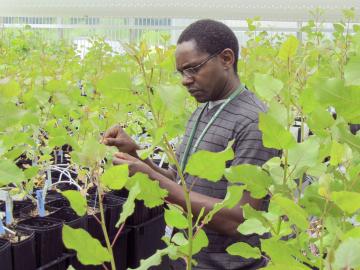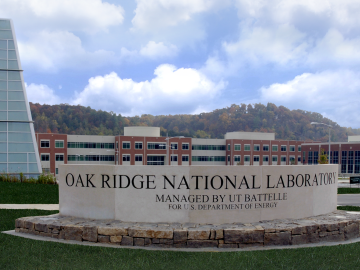Filter News
Area of Research
- (-) Biological Systems (4)
- (-) Energy Frontier Research Centers (5)
- (-) Nuclear Science and Technology (6)
- Advanced Manufacturing (4)
- Building Technologies (2)
- Chemistry and Physics at Interfaces (4)
- Clean Energy (51)
- Fossil Energy (1)
- Functional Materials for Energy (4)
- Geographic Information Science and Technology (1)
- Isotope Development and Production (1)
- Materials (43)
- Materials Synthesis from Atoms to Systems (3)
- Materials Under Extremes (4)
- Neutron Science (8)
- Quantum Condensed Matter (1)
- Reactor Technology (1)
- Renewable Energy (1)
- Supercomputing (12)
- Transportation Systems (3)
News Type
Media Contacts



GreenWood Resources has licensed an Oak Ridge National Laboratory technology based on the discovery of a gene in poplar (Populus trichocarpa) that makes it easier to convert poplar trees into biofuels. GreenWood, a global timberland investment and asset m...

Researchers at the Department of Energy’s Oak Ridge National Laboratory will support two new DOE-funded projects to explore, develop and demonstrate advanced nuclear reactor technologies. The projects announced Jan. 15 will allow industry-led teams with participan...

With the production of 50 grams of plutonium-238, researchers at the Department of Energy’s Oak Ridge National Laboratory have restored a U.S. capability dormant for nearly 30 years and set the course to provide power for NASA and other missions.




From the bluebird painting propped against her office wall and the deer she mentions seeing outside her office window, Linda Lewis might be mistaken for a wildlife biologist at first glance. But rather than trailing animal tracks, Lewis, a researcher at the Department of Energy’s Oak Ridge National Laboratory, is more interested in marks left behind by humans.

A major multinational report on bioenergy and sustainability released Tuesday concludes the sustainable production of bioenergy can be an important tool for addressing climate change. Two researchers at the Department of Energy's Oak Ridge National Lab...




